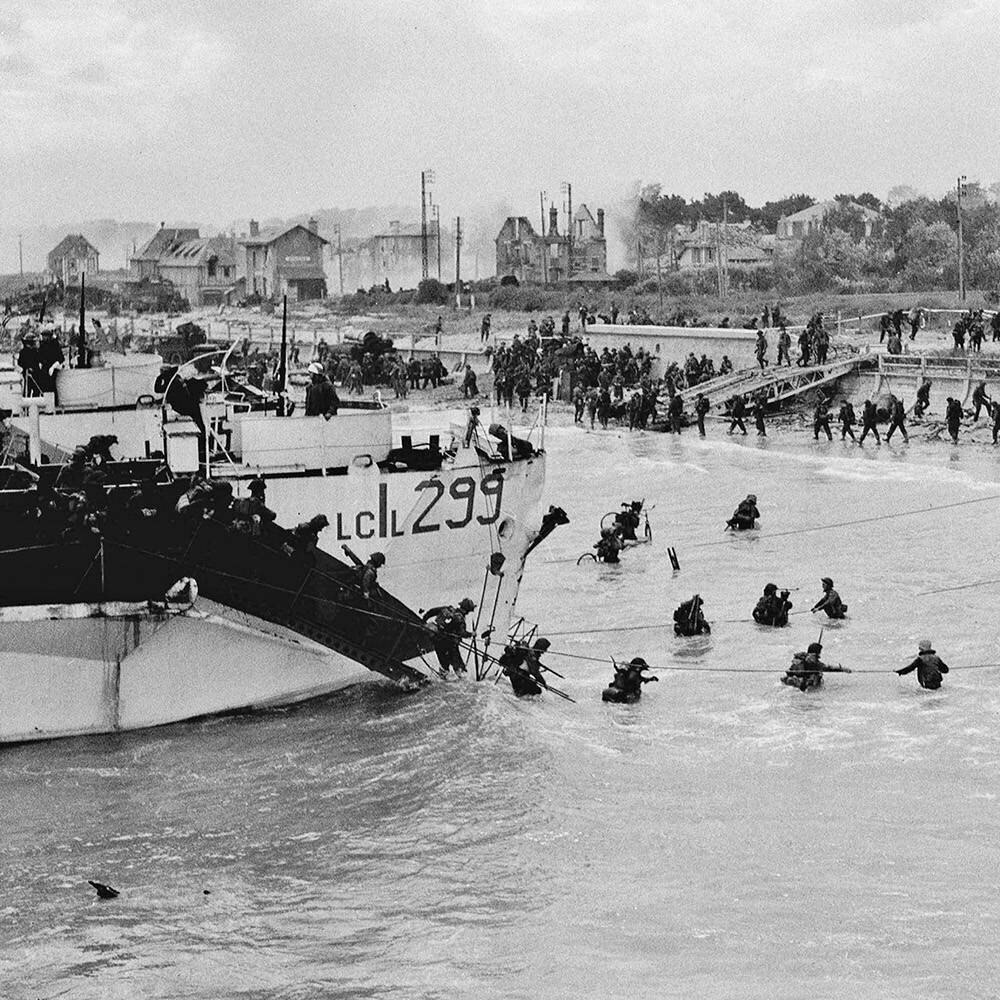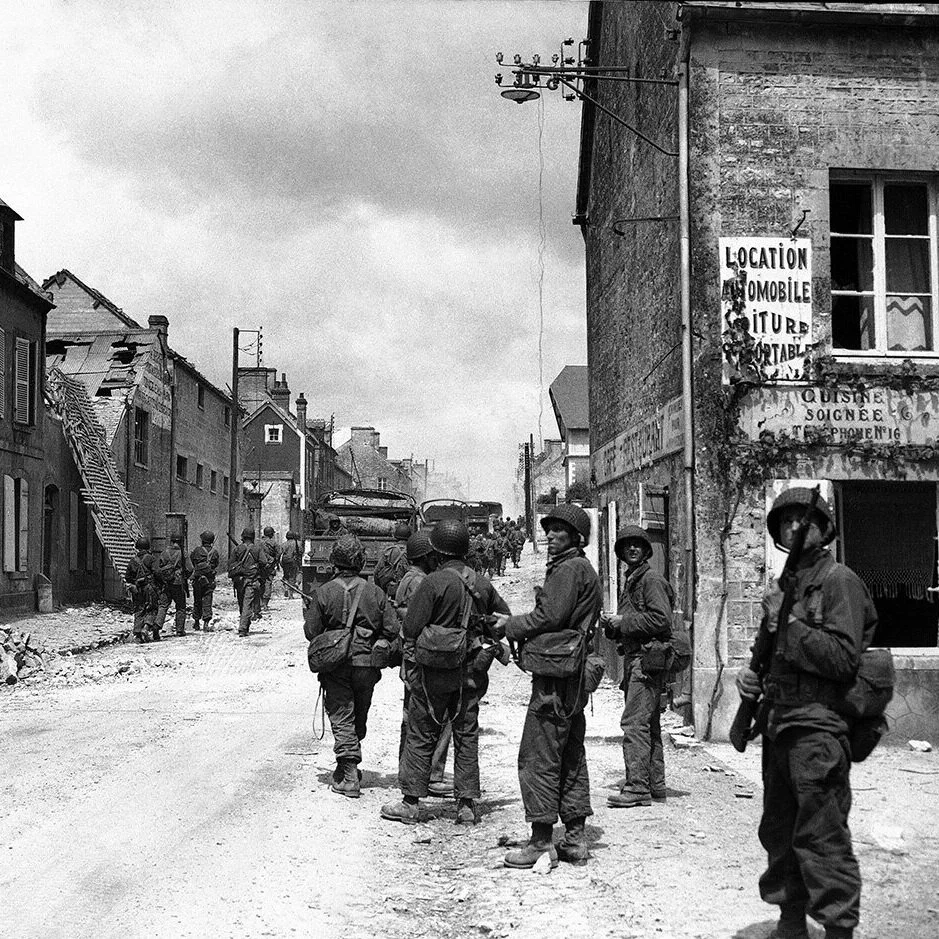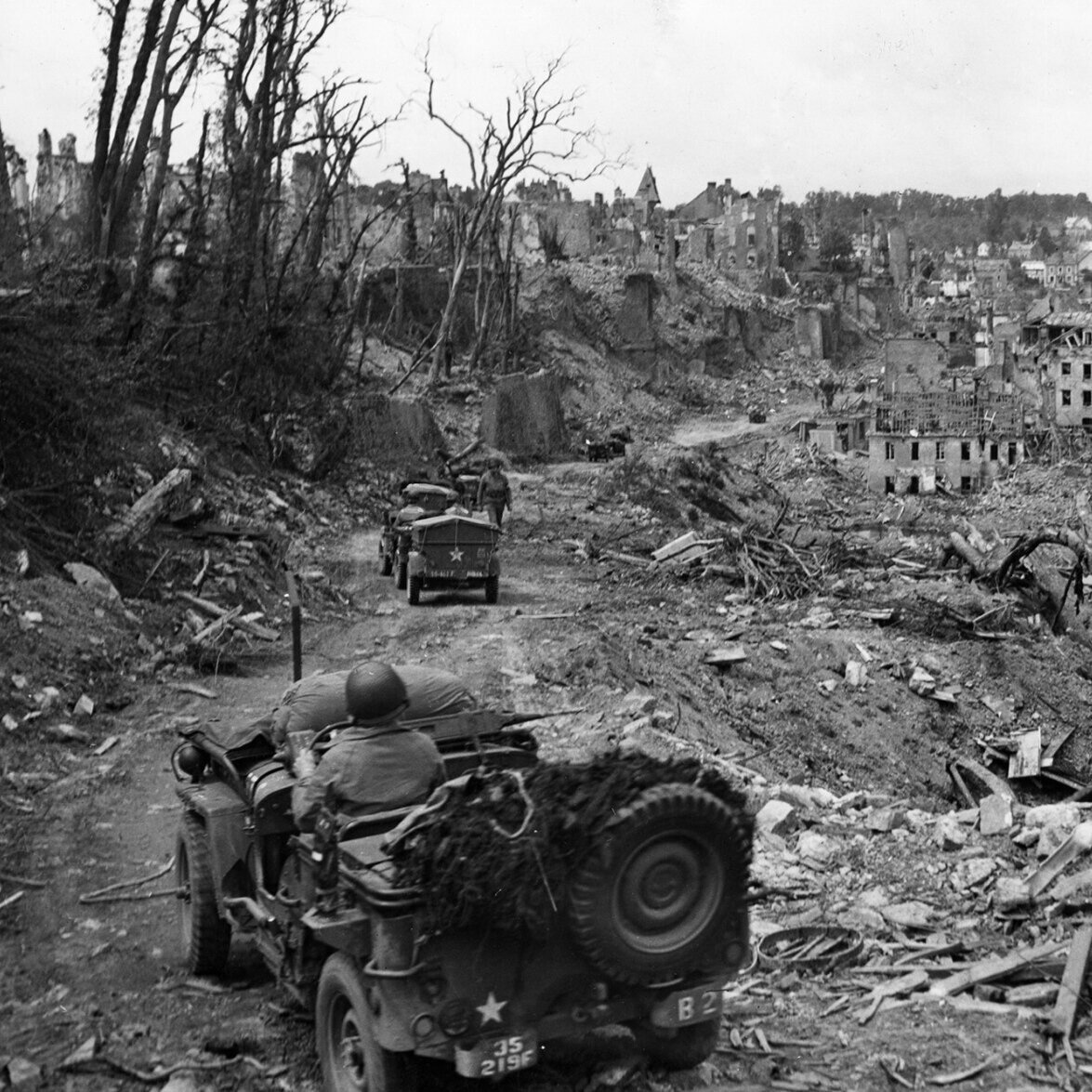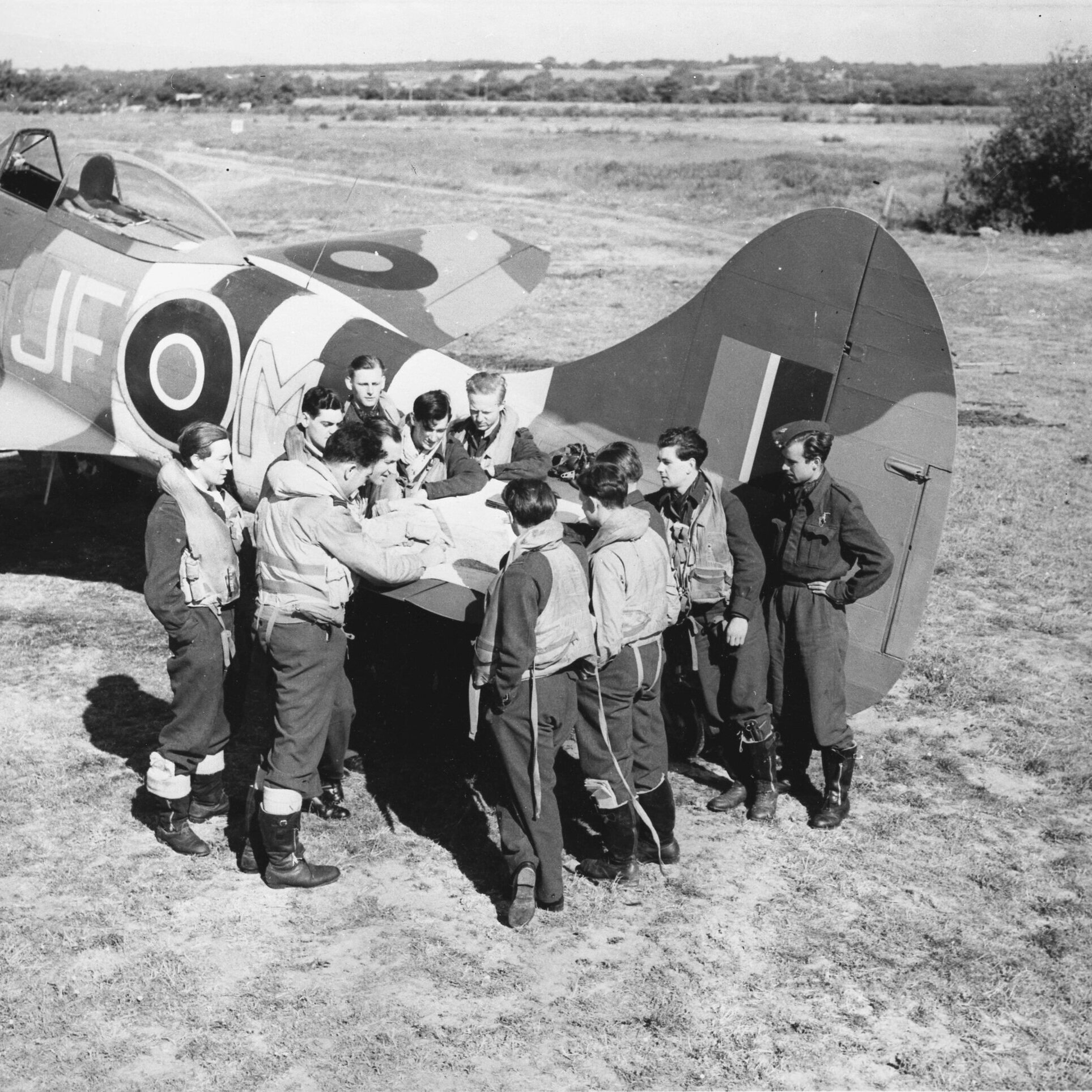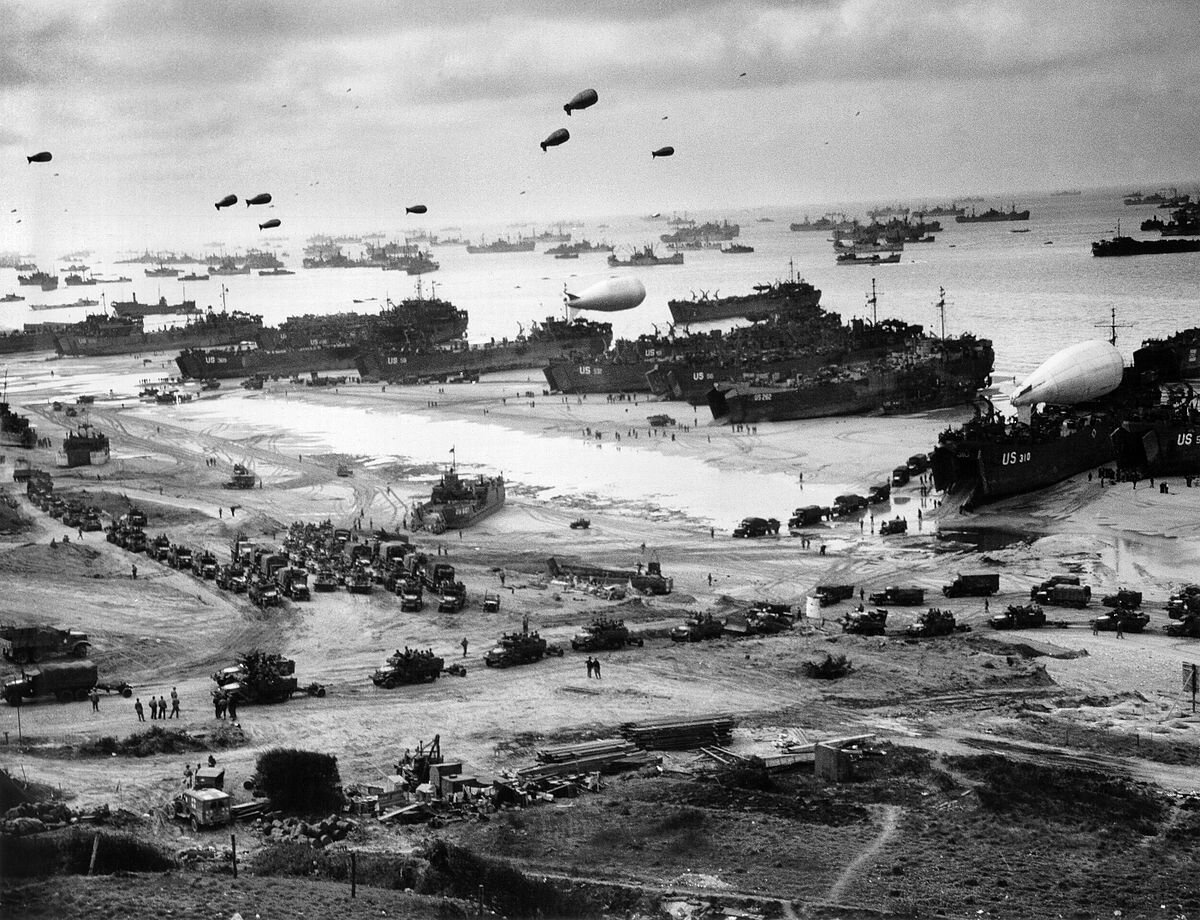
Buildup to D-Day & The Normandy Landings
The Normandy landings of Tuesday, 6 June 1944 were the first phase of the Allied invasion of occupied Normandy. Codenamed Operation Neptune - and often referred to as D-Day - it was the largest seaborne invasion in history. The operation began the liberation of German-occupied France and laid the foundations of the Allied victory on the Western Front.
British, American, Canadian and Free French troops, supported by massive aerial and naval bombardment stormed onto the beaches at Sword, Juno, Gold, Omaha and Utah in the early hours proceeded by large scale parachute and glider-borne landings. By the end of August 1944 over two million allied soldiers had landed, with 250,000 vehicles. No one who witnessed it could ever forget the sight: nearly 7,000 naval vessels of all sizes, including over 100 destroyers and 4,000 landing craft. The majority of the vehicles and stores later landed at the 'Mulberry' artificial Harbour at Arromanches. The American equivalent was destroyed in a violent gale. PLUTO provided the much needed fuel.
The Normandy Landings were hugely successful and those British and Canadians who landed eventually pressed on across the Seine River into Belgium and finally across the German border. Many of the Americans who landed were later involved in The Battle of The Bulge. The landings marked the start of a long and costly campaign in north-west Europe, which ultimately convinced the German high command that defeat was inevitable.
Those Americans who were killed in these Normandy landings are buried in the beautifully kept cemetery St Laurent. The largest British Commonwealth Cemetery is at Bayeux and there also is the Memorial to the Missing.
Piers is highly qualified to speak about Normandy having visited and spoken about this campaign for 35 years. This riveting talk is supported by over 100 slides and it is not only educational but a fitting tribute to those who fought and died on the beaches. He also wrote the blue-print for 'Heroes Return' the scheme that has enabled Normandy veterans to return to the beaches.
The Normandy Talk includes:
* The Airborne Landings
* The Normandy landings on the five beaches: Sword, Gold, Juno, Omaha & Utah
* The German reaction
* The Battle of Hillman
* Disaster at Omaha Beach
* US Cemetery at St Laurent
* Some of the major characters on all sides
* Personal testimonies of Normandy veterans
* Memorials, cemeteries, bridges, gun emplacements, artificial harbours, battlefields
* Stunning photographs, 'Then and Now'
* Personal reflections of Normandy widows
The Suffolk Regiment at the Normandy Landings
The 1st Battalion The Suffolk Regiment, under command of Colonel Richard Goodwin was the reserve unit for the breakthrough at Sword Beach on 6th June. During the crossing, the Suffolks had lost communication with their support bombardment ship, thought their assembly area had been compromised and the CO has lost his second-in-command and adjutant; furthermore he was unable to speak to the Green Howards at Pegasus Bridge - so he sent a trusted officer to deliver a message. All this before the Suffolks had even left the beach!
Colonel Goodwin had been ordered to capture the fortifications and gun positions code named Morris and Hillman. Success was vital for the capture of Caen on D Day. Morris fell relatively easily but Hillman was a hard nut to crack. The first attack faltered with loss of life and the CO prepared new orders. During this period he was visited and pressured by General Rennie, the Divisional Commander, who stressed the importance of capturing Hillman and then left with a cheery, “Good Luck!”
Piers vividly tells the story of this remarkable assault and what happened to Colonel Goodwin and the officers and men under his command. Piers’ father, Colonel Peter Storie-Pugh was the first Commanding Officer of the Suffolk & Cambridgeshire Regiment.
General Sir Richard Goodwin talking to soldiers of The Suffolk and Cambridgeshire Regiment of which Peter Storie-Pugh - Piers’ father - was the first commanding officer. Photo courtesy of The Suffolk and Cambridgeshire Regimental Association
